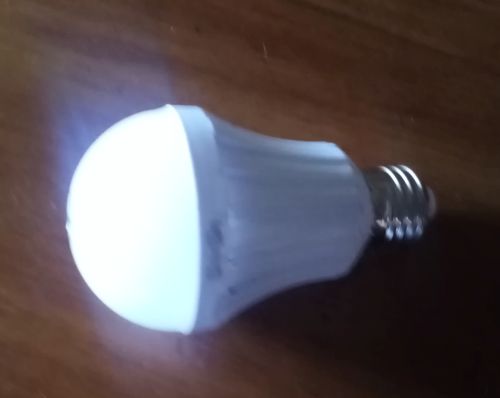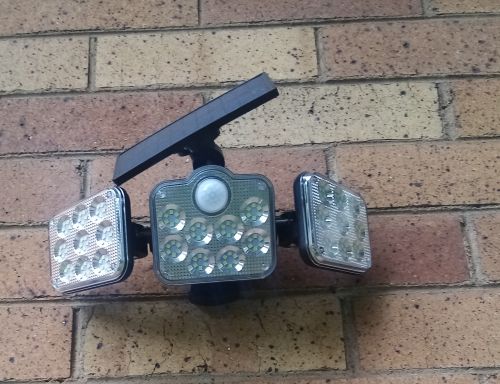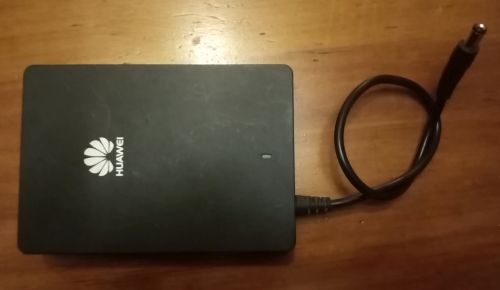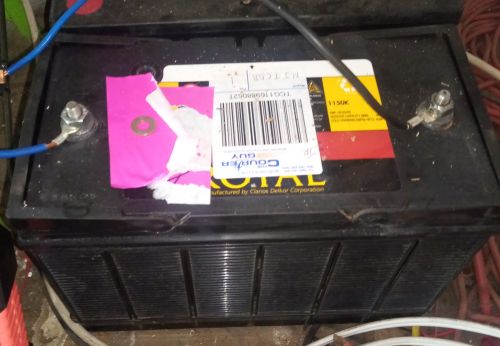
Dealing with Load shedding at home for South African conditions
Due to a variety of factors, and particularly bad planning by the South African Government, South Africa is short of
electricity and has implemented a rotational schedule of load shedding for all citizens. A block is switched off for a period of two hours at a time.
The municipalities and country are divided into 16 zones called blocks. As a result you will experience load shedding at least
once every 32 hours (1 day and 8 hours) if you are at Stage one. Stage two will cause two outages spaced by 8 hours in the cycle.
Stage 4 results in two hours off in every 8 hours.
When you get above stage 4 you endup with a four hour outage and four hours on before the next outage.
Each stage cuts demand on the grid by 1000 Mwatts. A city the size of Cape Town used 2000 Mwatts.
There have already been more than 200 days of load shedding in the past year and it is likely to continue to the end of 2023.
Eskom have machinary that could generate 44GW if all was working spread though 84 generator plants. Currently it is able to deliver
about 26GWatts depending on maintenance and equipment issues.
To deal with the realities of load shedding,
- Know you schedule so that you will not be caught off guard when your cutoff comes around. There are cellphone apps to communicate the schedule and the schedule is published by the Municipality.
- Powering through load shedding is a different problem from generating power economically via solar energy. Combining the problem is going to lead to a very expensive system that will never be economic. Generating energy from solar power and riding through load shedding
outages are different problems and need different solutions.
- Generating power from battery storage is expensive and it is important to minimise the need for power on devices that you wish to
keep operating during the load shedding outages. Load shedding happens day and night. So the devices you might want to keep operating
during the outages are lights, internet connections, laptop computer, TV, DSTV decoder and video games.
- Devices you do not want to power up during load shedding are water heating devices - such as kettle and geyser - fridges, freezers, oven and cooker tops, air conditioners, space heaters and pool pumps.
Geysers, fridges and freezers are energy storage devices and the insulation will protect them from losing their energy.
A modern freezer that is kept close can keep the goods inside safe for 3 days without power. A geyser will hold its heat for 24 hours without power.
- Switch space heaters to LPG gas which is more economic than using electricity. Get a camping stove or similar working from LPG to heat water for tea/coffee and cooking in an emergency.
- There are some ingenious lights that plug into a normal B22 mains globe socket and contain their own battery. They look exactly like a conventional light globe. When mains is present they
charge their battery and when mains is cut they provide light from their internal battery. We have about ten of these devices illuminating the stoeps, front door, outside of the building, backyard, bathroom, kitchen and our lounge. They work 24 hours a day providing
light in these areas day and night. We also use some for our reading lights in the bedroom.

Normal B22 mains globe
- Another ingenious device for this situation is solar powered outside flood lights. They have a movement sensor that activates the
floodlights for 30 seconds when detecting movement. The advantage of these lights is that they get power for their batteries from inbuilt
solar panels and can be used where no mains power is available. We have these lights at our front gate, above outside stair cases, and along pathways that we might wish to walk at night in the garden. You instal these devices and forget as they just work by themselves even in the darkest nights.

Solar powered movement detection floodlights
Generating electrical power during load shedding,
- Generating mains power is inefficient and expensive compared to providing low voltage power. Typically the modem in your internet
operates at 12 volts and you can get small inverters containing lithium batteries that will keep the modem powered for hours during
a loss of mains. We get about 6 hours from one of these devices operating a LTE modem and giving WiFi coverage during a mains outage.

DC to DC inverter for modems
- Generating mains power for the devices you want to power up is going to involve an inverter, battery and a charger. The power generated from the inverter is fed to the devices you want to powerup via an extention cord and multiplug.
The inverter converts 12 volt DC energy stored in the battery to mains AC power at 230 volts. The inverter needs to be large enough to handle peak surges when devices are turned on. Large currents flow from the battery to the inverter - typically in the range of 10 to 20 amps depending on the load being used. Hence use thick diameter and short cables between the battery and the inverter to minimise
losses.

1500watt 12vDC to mains inverter
Because load shedding happens day and night, a mains charger is needed. Preferably an intelligent charger so as not to over charge the battery. This one provides 6 amps DC and switches off when the battery is full. You need to cater for situations where load shedding is seldom and times where it is severe.

Intelligent charger 12vDC
We use 100amp hour 12v batteries. These are by far much cheaper that Lithium batteries and make for a much simpler system. A 100 AH Gel battery costs about R1600 and has a storage capacity of 1.2KwH. Ideally you want to draw 10% of the current capacity from the battery, so it is ideal when you are drawing 10 amps to 20 amps.

100 AH Battery
- This system is modular and you can adjust its capacity by adding batteries and chargers if you are running out of capacity.
You can also add solar chargers if you want to charge the batteries from sunpower when load shedding happens during the day.
- Similar systems are available in differnt packaging, where the charger, inverter and battery are all housed in one unit.
- You can save battery energy by turning off appliances when not in use,- such as turning off the TV when leaving the room. Also unplug devices that do not need continuous power from the backup system and run them again of mains when load shedding not in action.
Costing
The following prices are approximate and are based on you buying parts via sites like Bid or Buy/Gumtree to do it yourself
- Inverter
- R2000
- Charger
- R350
- Battery
- R1620
- Outside floodlights
- R250
- B22 globe
- R95
- 12volt power pack for modem
- R300
Track record.
Built a solar system in 2014 and have generated approx. 33000kwh from a system costing approx R30000. Have a 21.6 sq meter system of 21 panels and 7 mini inverters controlled by a computer to throttle down power when not needed.System can generate up to 3kwatts peak and maintain at this capacity if needed. Generate about 15kwh per day. Have no batteries and use municipal power to deal with peaks such as geyser, stove and motor startup. Generate about 60% of our daily needs from solar. Author is an Electrical Engineer educated at Wits University in the 1970s.
Getting help and advice
This description is provided to show how easy it is to get going. I am not selling anything, just encouraging users to take the first step.
You can contact me for help and advice from Mike at info@rapidttp.co.za
Tel +27 72 992 6040
Getting help and advice
This description is provided to show how easy it is to get going. I am not selling anything, just encouraging users to take the first step.
You can contact me for help and advice from Mike at info@rapidttp.co.za Tel +27 72 992 6040
Mike 12 April 2023
Also see an article on Cost effective solar systems for South African conditions
Also see an article on Smart Home using solar systems
Also see an article on battery storage systems
Also see an article on Solar water heating - solar geysers
Also see an article on Measuring systems for solar systems
Also see an article on Gridtie inverters -Converting solar energy
Also see an article on Stand alone inverters -Converting battery energy
Also see an article on Energy equivalents
info@rapidttp.co.za







